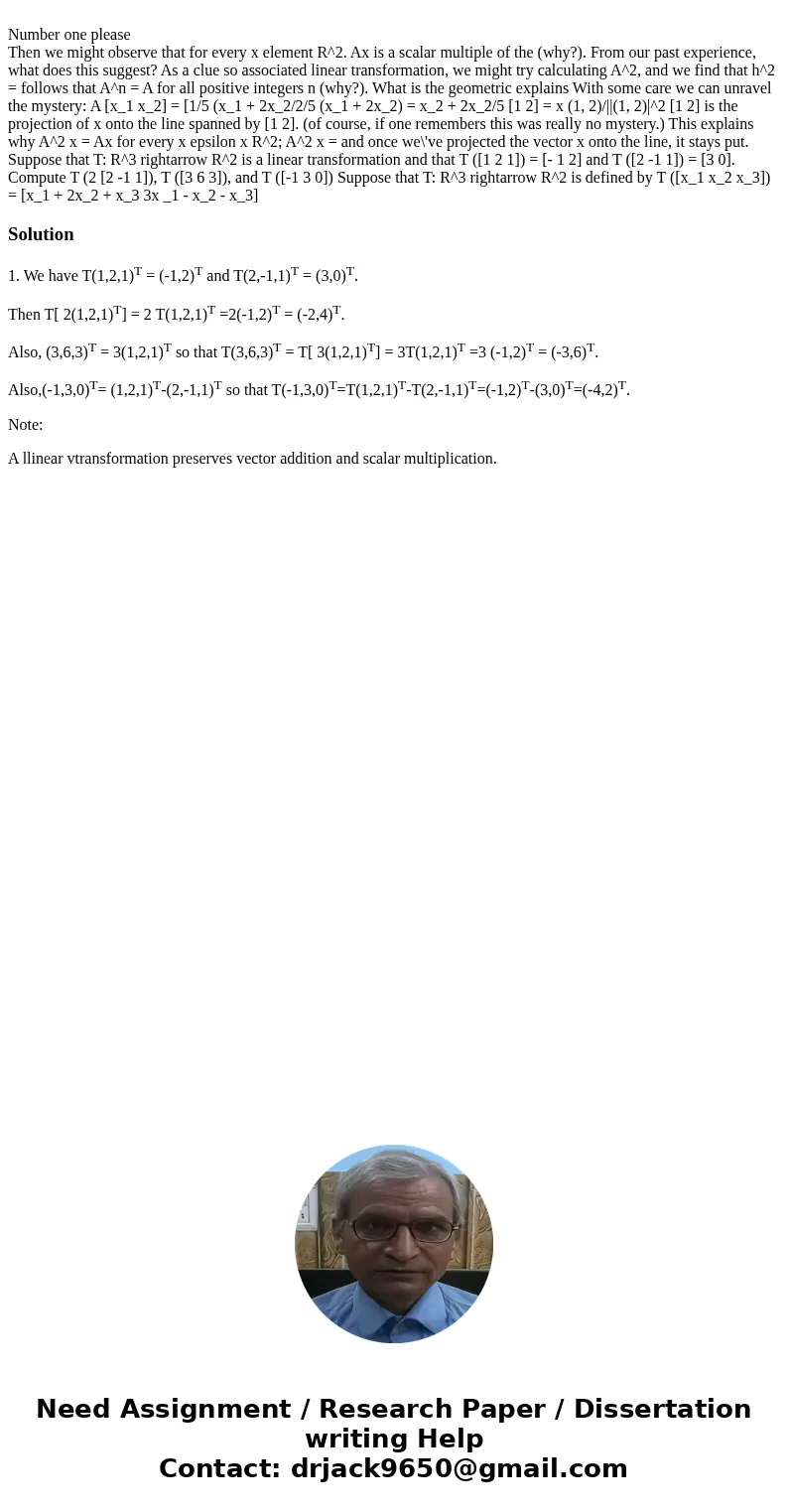Number one please Then we might observe that for every x ele
Number one please
Then we might observe that for every x element R^2. Ax is a scalar multiple of the (why?). From our past experience, what does this suggest? As a clue so associated linear transformation, we might try calculating A^2, and we find that h^2 = follows that A^n = A for all positive integers n (why?). What is the geometric explains With some care we can unravel the mystery: A [x_1 x_2] = [1/5 (x_1 + 2x_2/2/5 (x_1 + 2x_2) = x_2 + 2x_2/5 [1 2] = x (1, 2)/||(1, 2)|^2 [1 2] is the projection of x onto the line spanned by [1 2]. (of course, if one remembers this was really no mystery.) This explains why A^2 x = Ax for every x epsilon x R^2; A^2 x = and once we\'ve projected the vector x onto the line, it stays put. Suppose that T: R^3 rightarrow R^2 is a linear transformation and that T ([1 2 1]) = [- 1 2] and T ([2 -1 1]) = [3 0]. Compute T (2 [2 -1 1]), T ([3 6 3]), and T ([-1 3 0]) Suppose that T: R^3 rightarrow R^2 is defined by T ([x_1 x_2 x_3]) = [x_1 + 2x_2 + x_3 3x _1 - x_2 - x_3] Solution
1. We have T(1,2,1)T = (-1,2)T and T(2,-1,1)T = (3,0)T.
Then T[ 2(1,2,1)T] = 2 T(1,2,1)T =2(-1,2)T = (-2,4)T.
Also, (3,6,3)T = 3(1,2,1)T so that T(3,6,3)T = T[ 3(1,2,1)T] = 3T(1,2,1)T =3 (-1,2)T = (-3,6)T.
Also,(-1,3,0)T= (1,2,1)T-(2,-1,1)T so that T(-1,3,0)T=T(1,2,1)T-T(2,-1,1)T=(-1,2)T-(3,0)T=(-4,2)T.
Note:
A llinear vtransformation preserves vector addition and scalar multiplication.

 Homework Sourse
Homework Sourse